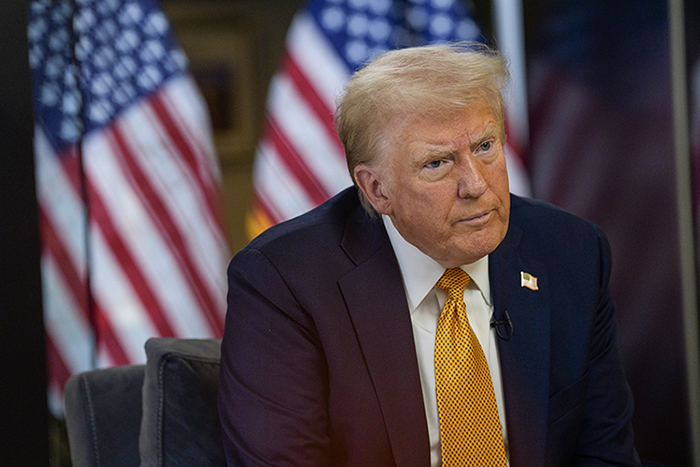Analyses / Middle East / North Africa
18 December 2024
The Future Trump Administration and Its Strategy Towards Syria

The victory of Donald Trump in the presidential election on November 5, 2024, and his imminent return to the White House in January 2025 are expected to have significant implications in the Middle East. His presidency will likely be marked by increased support for Israel and heightened hostility towards the Islamic Republic of Iran. This direction is already taking shape, as evidenced by his conversation with Israeli Prime Minister Benjamin Netanyahu, which highlighted their shared vision of the “Iranian threat in all its aspects.” The “maximum pressure” policy implemented during his previous term may resurface, with the primary goal of safeguarding American interests. Trump’s return also strengthens the axis with some Gulf countries (Bahrain, United Arab Emirates, and Saudi Arabia), who view the Republican candidate more favourably than his Democratic predecessor. The strengthening of these alliances could intensify the confrontation with the Islamic Republic, despite the recent rapprochement between Riyadh and Tehran. If a ceasefire in Gaza is achieved, Donald Trump could resume negotiations for Israeli-Saudi normalization, with a defence pact between Washington and Riyadh as a backdrop. In this context, the rebel offensive on November 27, which led to the fall of Bashar al-Assad’s regime on December 8, represents a major geopolitical upheaval that the incoming American administration will need to integrate, even though no clear strategy for Syria has yet been revealed. In a Middle East shaped by Israel’s wars and its confrontation with Iran, what role will Syria play in the future American strategy?
What would the return of Trump mean for the troops deployed in Syria?
Turkish President Recep Tayyip Erdoğan congratulated Donald Trump on the results, but expressed some concerns. Through his Foreign Minister Hakan Fidan, Ankara conveyed uncertainties about Trump’s potential policy on Syria, while urging him to reconsider his ties with the PKK (Kurdistan Workers’ Party). Given the ongoing clashes between Turkey and the PKK, US support remains a point of tension between Ankara and Washington.
Regarding the presence of approximately 900 US soldiers, Robert F. Kennedy Jr., who could be appointed Secretary of Health, stated that Trump wanted their withdrawal to prevent them from becoming embroiled in a conflict between Turkey and the PKK. However, in the aftermath of al-Assad’s regime departure and in the face of a resurgence of ISIS, the US has taken advantage of the instability to carry out airstrikes in central Syria on ISIS positions. Added to this persistent threat is Turkey’s desire to establish a buffer zone to confront the Kurdish-dominated Syrian Democratic Forces (SDF), supported by the US. As a partner of HTS, Ankara benefits from a strategic advantage that allows it, along with its allies in the Free Syrian Army, to conduct more freely operations in Syria. For now, a withdrawal of American troops would be premature, and the vacuum left would likely lead to clashes between the various factions fighting for control of territory and resources. The differences in interests between the two NATO members are resurfacing and necessitate a ground presence to protect American and allied interests.
What role for Syria in the Middle East for the United States?
Since the events of October 7, 2023, Syria has been inevitably drawn into the regional conflict, particularly due to Israeli positions on its soil. Caught in a complex dynamic, Bashar al-Assad has had to balance his alliance with Iran while attempting to minimize his direct involvement in regional confrontations. This stance has led to a distancing between the Syrian regime and Hezbollah, which has accused Assad of passing sensitive information about the presence of Iranian officials and Hezbollah members to the Israeli authorities. According to the Kremlin, Assad’s “resignation” contributes to the weakening of the so-called “Axis of Resistance” by fragmenting its supply routes, leading to over 310 strikes on military installations linked to Iran and its allies. Benjamin Netanyahu claimed credit for indirectly causing Assad’s fall, while recalling his “good neighbour” policy towards Syria during the civil war and not showing animosity towards the rebel groups. Meanwhile, many Israeli politicians, including opposition leader Yair Lapid, welcomed the weakening of the Iranian axis but expressed concerns about the nature of the future regime. HTS’s main objective is to ensure national unity by addressing the expectations of Syria’s diverse communities. Its ability to secure the territory it controls will likely contribute to the Syrian people’s acceptance of its authority. This includes combating the remnants of Iranian influence in the country and opening a dialogue with Israel about halting the airstrikes and troop deployments. HTS and the Israeli authorities, vigilant over Hezbollah’s armament transiting through Syria, share a common objective, which could lead to collaboration.
Negotiations will be required regarding the Golan Heights, which Netanyahu declared “annexed for eternity” after the deployment on the Syrian side of Mount Hermon in the Golan buffer zone, although the US seeks this operation to be temporary. Here, HTS, formerly linked to Al-Qaeda, aims to present itself primarily as a rebel group, not a terrorist one, in order to gain international support and funding for reconstruction. Aware of regional and international sensitivities, the rebel group seeks to distinguish itself from other Islamist movements, such as Hamas, which has supported it. Though Islamist and focused on a national jihad, HTS must appear moderate if it is to secure its military victories and successfully manage the desired political transition. To this end, the rebel organization has increased diplomatic contacts, particularly with Arab countries and the United Nations. Internally, its leader, Mohamed al-Jolani (real name Ahmed al-Sharaa), has declared his intention to respect the religious and ethnic minorities under his control. Politically, the coalition led by HTS announced a general amnesty for Assad’s regime soldiers and indicated that the institutions would remain under the control of the previous government appointed by Assad. In Europe, officials like Pat McFadden, UK Minister for Intergovernmental Relations, have discussed the possibility of normalization in light of HTS’s communications about the fate of minorities. However, the European Union remains cautious, waiting for concrete actions before considering removing the group from its sanctions list. In the United States, the Biden administration, through Secretary of State Antony Blinken, has decided to make initial contact with HTS without de-listing the group as a terrorist organization. While Donald Trump has stated he does not wish to get involved in the Syrian situation, a strategy must be developed to address the shifting dynamics in the Middle East, particularly to prevent the strengthening of more radical Islamist groups. The Trump administration, potentially with support for Assad through Tulsi Gabbard, will need to clarify how it plans to collaborate with the Syrian regime, if at all.
Recent events also weaken Russia, which has failed to normalize the regime with Turkey, which will now need to negotiate the continued presence of its military forces in Syria. Combined with the weakening of the Islamic Republic of Iran, this retreat could strengthen the US position in the region after the “Asia pivot.” Following the Abraham Accords, Trump may be tempted to bring Syria into this Israel-friendly axis, aiming to further isolate Iran while countering China’s growing influence, particularly after its role as a mediator in the Saudi-Iranian normalization.

